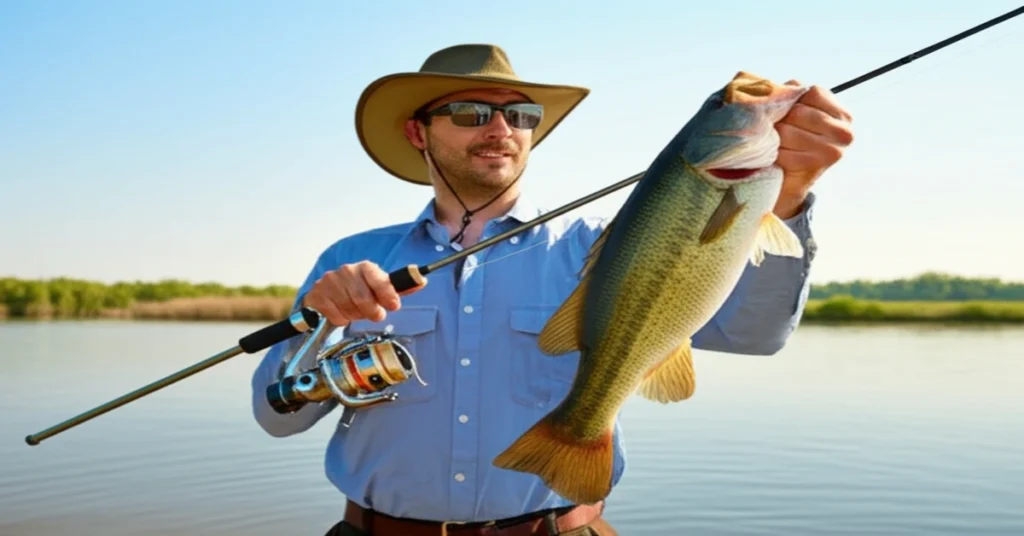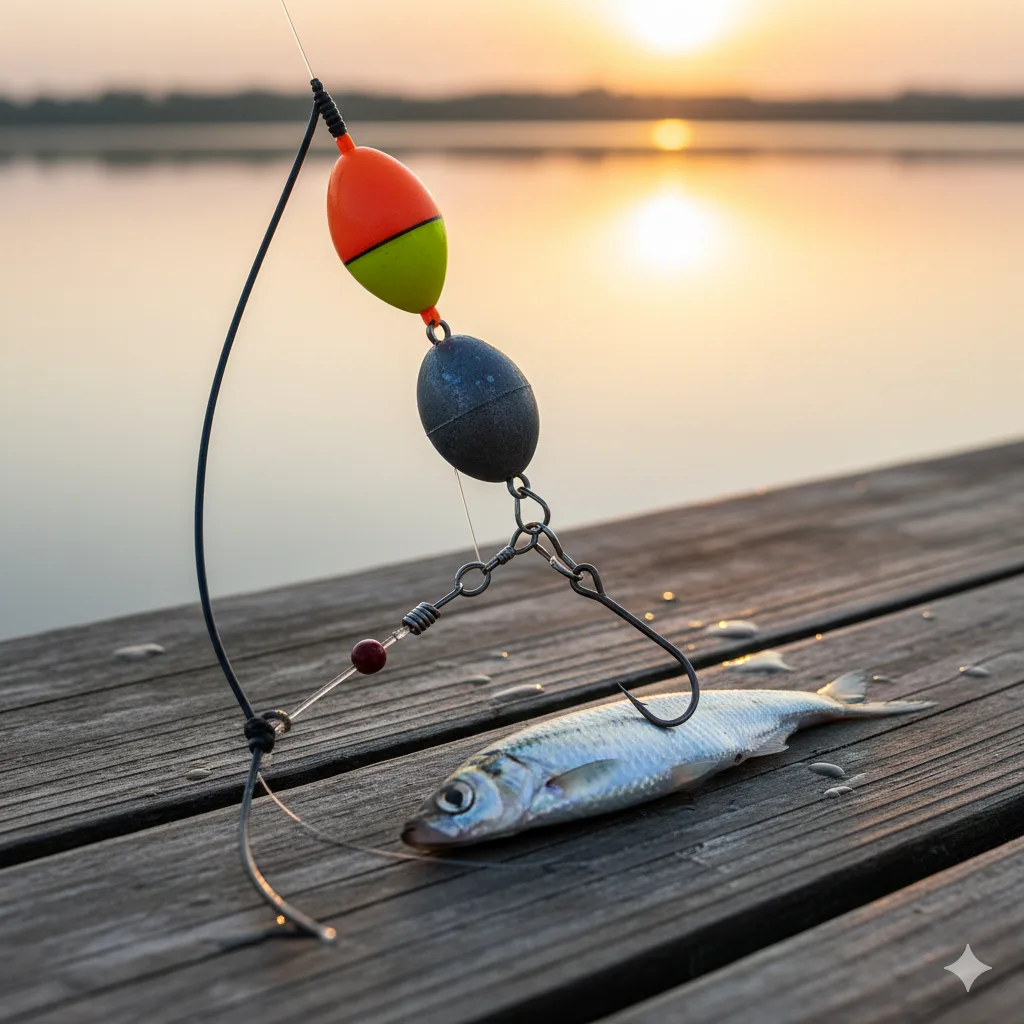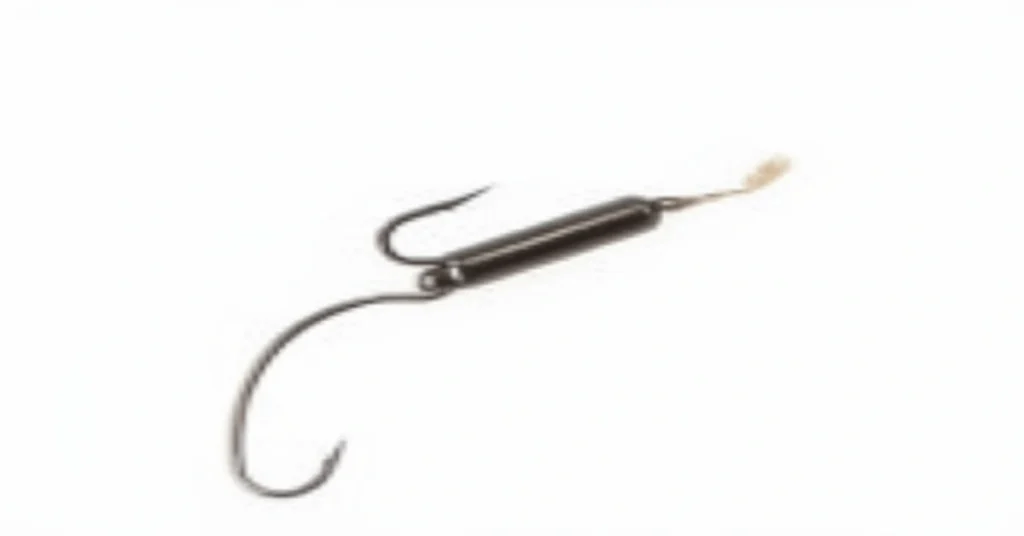Master live worms fishing: An Expert’s Guide
There’s a timeless truth in angling: despite thousands of high-tech lures, nothing triggers a fish’s natural instinct quite like a wiggling worm. For generations, live worms fishing has been the cornerstone of successful fishing trips, a method so effective it feels like a secret weapon. If you’ve ever struggled to get a bite or want to elevate your skills from novice to expert, you’ve come to the right place. This guide is designed to demystify the art of live worms fishing, providing actionable strategies that translate directly to more fish on your line.
We’ll go beyond simply hooking a worm and casting it out. You will learn the nuances of worm selection, master various worm rigging methods, and discover advanced worm presentations that savvy anglers use to consistently outperform others. This comprehensive worm fishing guide will equip you with the knowledge to turn a simple worm into the most powerful tool in your tackle box, ensuring your next outing is your most productive yet.
Table of Contents
- What is live worms fishing?
- Key Benefits and Importance
- Complete Step-by-Step Guide
- Expert Tips & Best Practices
- Common Mistakes to Avoid
- Advanced Strategies for 2024/2025
- Essential Tools & Resources
- Frequently Asked Questions
What is live worms fishing?
Live worms fishing is the angling practice of using live earthworms as natural bait to attract and catch fish. It is one of the oldest and most universally effective worm fishing methods, appealing to a vast range of freshwater species due to the worm’s natural scent, texture, and movement.
This technique is far more than a simple beginner’s tactic; it encompasses a deep understanding of ecology and fish behavior. Mastering it involves careful worm selection—from large Canadian nightcrawlers for nightcrawler fishing to smaller red worms for red worm fishing—and precise worm rigging to ensure optimal worm presentations. Whether you’re targeting panfish in a local pond or engaging in live worm bass fishing in a large reservoir, the fundamental principles of presenting a live offering remain paramount. Effective worm fishing techniques can be adapted for still water, rivers, and streams, making this a truly versatile approach for any angler.
Key Components
- Worm Selection: Choosing the right worm species and size (e.g., nightcrawlers, red wigglers, garden worms) based on the target fish and water conditions. This is the foundation of successful live worms fishing.
- Proper Rigging: The art of hooking the worm to maximize its natural movement while ensuring a solid hookset. This includes various worm rigging styles for different scenarios.
- Strategic Presentation: How the baited hook is delivered and moved in the water to entice a strike. Effective worm presentations can range from stationary bottom fishing to actively drifting the bait through a current.
- Appropriate Gear: Using the right combination of rod, reel, line, hook, and weight to effectively present the worm and handle the fight. The right gear is crucial for all worm fishing methods.
Why live worms fishing Matters: Key Benefits
In a world of complex lures, the simplicity of live worms fishing is its greatest strength. It is universally effective because it taps directly into the natural food chain. Virtually every freshwater fish eats worms or similar invertebrates, making it a bait that rarely gets refused. This high-success-rate method is perfect for both beginners seeking their first catch and experts needing a reliable fallback when artificials fail.
Unmatched Natural Attraction
A live worm releases natural scents and amino acids into the water, creating a powerful chemical trail that fish can detect from a distance. Its subtle, wriggling motion is a visual trigger that signals an easy, high-protein meal. Unlike a plastic lure, a fish that mouths a real worm is less likely to spit it out, giving you more time to set the hook. This is especially true for techniques like live worm bass fishing, where a bass might inhale and hold a natural bait longer than an artificial one.
Incredible Versatility and Accessibility
One of the top benefits is its adaptability. The same basic setup can catch a bluegill, a trout, a catfish, or a largemouth bass with only minor adjustments. Furthermore, worms are inexpensive and widely available at bait shops, sporting goods stores, or even in your own backyard. This accessibility makes live worms fishing a cost-effective and dependable strategy for any angler, anywhere. Mastering a few worm fishing techniques opens the door to catching fish in almost any body of freshwater.
“Never underestimate the power of a well-presented live worm. It’s the one bait that speaks a universal language to fish, regardless of season or water clarity.”
Complete Guide to live worms fishing – Step-by-Step
Following a structured process will dramatically increase your success with live worms fishing. This step-by-step worm fishing guide breaks down the essential actions from selecting your bait to making the perfect cast. Adhering to these steps provides a solid foundation for any angling situation.
Step 1: Worm Selection and Proper Care
Your success starts before you even reach the water. Choosing the right worm is critical. For larger species like bass or catfish, nightcrawler fishing with big, juicy Canadian nightcrawlers is ideal. For smaller panfish like bluegill or perch, red worm fishing with smaller, more active red wigglers is often more effective. Always choose lively, healthy worms.
- Specific action item: Purchase worms from a reputable bait shop or cultivate your own. Inspect them to ensure they are active and not dried out.
- Required tools or resources: A small cooler or insulated bait container with moist, cool bedding (like commercial worm bedding or damp shredded newspaper).
- Expected outcome: You will have lively, appealing bait that stays active on the hook longer, increasing your chances of a strike.
Step 2: Gearing Up – The Right Tackle Combination
Your equipment must match your target and technique. For most general live worms fishing, a light to medium action spinning rod (6 to 7 feet long) with a matching reel spooled with 4 to 8-pound test monofilament or fluorocarbon line is perfect. The most crucial component is the hook. Baitholder hooks in sizes 1 to 6 are excellent choices as their small barbs on the shank help keep the worm in place. Add a small split-shot sinker 12-18 inches above the hook to help get the bait down into the strike zone.
Step 3: Mastering Essential Worm Rigging Methods
How you hook the worm directly impacts its action and your hook-up ratio. A poor worm rigging job can kill the worm or cause it to spin unnaturally. The goal is a lively presentation. For a simple and effective rig, hook the worm once through its thick collar (clitellum) near the head. This allows the rest of the body to wriggle freely and naturally. For a weedless setup, especially for live worm bass fishing, a Texas Rig with the hook point buried back into the worm’s body is an excellent choice. This allows you to fish through cover without snagging.
Expert Tips & Best Practices for live worms fishing
Adhering to best practices separates the lucky angler from the consistently successful one. These expert worm fishing tips are designed to refine your approach, whether you are just starting or have been fishing for years. Small details in your worm presentations can make a huge difference.
For Beginners:
- Keep it Simple: Start with a simple bobber rig. Attach a small float above your sinker and hook. This provides a visual strike indicator and keeps your worm suspended just off the bottom, right in the sightline of many fish.
- Use Fresh Bait: Don’t use old, listless, or dried-out worms. Change your worm every 15-20 minutes or after a missed strike to ensure you always have a fresh, scent-releasing bait in the water.
- Match the Hatch (Size): Use smaller worms or pieces of worms for smaller fish like bluegill. A giant nightcrawler can be intimidating to a small-mouthed fish. This simple aspect of worm selection is often overlooked.
For Advanced Users:
- Use a Worm Blower: For bottom fishing in lakes, use a worm threader and a hypodermic needle-like tool called a worm blower to inject a small bubble of air into the tail of a nightcrawler. This makes the worm float up off the bottom, creating a highly visible and irresistible presentation for passing fish. This is a top-tier nightcrawler fishing technique.
- Free-Lining in Current: In rivers and streams, try “free-lining” with no weight at all. Cast a lively worm upstream and let it drift naturally with the current through pools and runs. This is one of the most deadly worm fishing methods for river trout and smallmouth bass.
5 Common live worms fishing Mistakes to Avoid
Success in live worms fishing often comes down to avoiding simple errors. Many anglers make these common mistakes, which can drastically reduce their catch rate. By identifying and correcting them, you can immediately improve your results.
Mistake #1: Overloading the Hook
The Problem: Many beginners thread the entire worm onto the hook, balling it up into a large, unnatural-looking clump. This kills the worm’s natural action and can cover the hook point, leading to missed hooksets.
The Solution: Hook the worm only once or twice, leaving long ends to dangle and wiggle freely. This maximizes movement and scent while ensuring the hook point is exposed for a solid connection when a fish bites.
Mistake #2: Using Heavy, Unnatural Gear
The Problem: Using a thick fishing line, a large, heavy sinker, and an oversized hook can make the presentation stiff and unnatural. Fish, especially in clear water, can be wary of clunky terminal tackle.
The Solution: Scale down your gear. Use the lightest line, smallest sinker, and thinnest wire hook possible for the conditions. This allows for better worm presentations and is a key component of effective worm fishing techniques.
Mistake #3: Improper Worm Storage on the Water
The Problem: Leaving your worm container in the direct sun or letting the bedding dry out will quickly kill your bait. Dead worms have little scent and no action, making them far less effective.
The Solution: Keep your worms in an insulated container in a shady spot. Periodically check the bedding to ensure it’s moist (but not soaking wet). A few drops of non-chlorinated water can revitalize them.
Mistake #4: Static, Lifeless Presentations
The Problem: Casting out a worm and letting it sit motionless on the bottom for an extended period is not always the best strategy. Fish are often attracted to subtle movements.
The Solution: After letting your bait settle, slowly lift your rod tip a few inches and then let it fall back down. This subtle jigging action can attract attention. When river fishing, actively manage your drift to ensure a natural path.
Mistake #5: Poor Timing on the Hookset
The Problem: Setting the hook too quickly can pull the bait out of the fish’s mouth, while waiting too long can result in a deeply hooked (gut-hooked) fish, which is harmful if you plan to release it.
The Solution: When you feel a bite, gently reel in any slack and lower your rod tip toward the fish. When you feel the weight of the fish, apply steady pressure and sweep the rod upwards in a firm, not violent, motion to set the hook in the corner of its mouth.
Advanced live worms fishing Strategies for 2024/2025
To truly elevate your live worms fishing game, you must move beyond the basics and embrace modern, nuanced approaches. These advanced strategies for 2024/2025 combine the natural appeal of live bait with the precision of modern tackle and techniques, giving you a competitive edge.
Dropshotting a Live Worm
The dropshot rig, popular in professional bass fishing, is a phenomenal way to present a live worm. By placing the weight at the bottom of the line and the hook tied directly to the line 12-24 inches above it, the worm is suspended weightlessly off the bottom. This keeps it out of silt or weeds and directly in the fish’s strike zone. Gently shaking the line imparts an irresistible quivering action to the worm without moving the weight. This is a game-changing technique for finicky fish and a superior method for live worm bass fishing in deep water.
The “Wacky Rigged” Nightcrawler
While typically used with soft plastics, wacky rigging a live nightcrawler is a devastatingly effective, slow-falling presentation. For this worm rigging style, hook a large nightcrawler directly through the middle (the clitellum). Cast it weightless near cover like docks, weed edges, or laydown trees. As it sinks, both ends of the worm will undulate and wiggle, creating a unique visual trigger that pressured fish have rarely seen. This is an advanced worm fishing method that excels in calm, clear water conditions.
Essential Tools & Resources for live worms fishing
Having the right gear and information is fundamental to success. While live worms fishing is accessible, a few specialized tools and resources can significantly improve your efficiency and effectiveness on the water.
Recommended Tools:
- Insulated Bait Cooler: A high-quality, insulated container with proper bedding is non-negotiable for keeping worms healthy and active, especially on hot days.
- Baitholder Hooks: These hooks (sizes 1-8) are designed with small barbs on the shank to prevent the worm from sliding down, leading to better presentations and fewer re-baitings.
- Split-Shot Sinker Assortment: A variety pack of removable split-shot weights allows you to quickly adjust to changing depths and currents without having to re-tie your entire rig.
Additional Resources:
- Local Fishing Forums and Reports: Websites and forums dedicated to your local area provide real-time information on what’s biting and where. This intel can help you tailor your live worms fishing approach for the day.
- Topographic Lake Maps (Digital or Paper): Understanding the bottom contour of a lake is crucial. A map helps you locate key structures like drop-offs, points, and flats where fish are likely to congregate, making your worm presentations more targeted.
Frequently Asked Questions About live worms fishing
Q1: What are the best worm fishing techniques for clear water conditions?
Answer: In clear water, fish can be more cautious. The best worm fishing techniques involve finesse and natural presentations. Use a lighter line (4-6 lb fluorocarbon), smaller hooks (size 6 or 8), and minimal weight. Free-lining a worm in a river or using a lightweight split-shot rig in a lake are excellent choices. The key is to make your worm presentations as subtle and lifelike as possible. Wacky rigging a nightcrawler weightless can also be incredibly effective as its slow, fluttering fall looks very natural.
Q2: What is the most effective worm rigging for live worm bass fishing?
Answer: For live worm bass fishing, two worm rigging methods stand out. The Texas Rig is fantastic for fishing a nightcrawler through weeds and cover, as it’s completely snag-proof. The Dropshot Rig is arguably the best for open water or targeting specific structures seen on electronics, as it suspends the worm enticingly off the bottom. Both rigs allow for excellent worm presentations that big bass find hard to resist.
Q3: When is nightcrawler fishing better than red worm fishing?
Answer: Nightcrawler fishing is generally better when targeting larger species like largemouth bass, catfish, walleye, or large trout. The larger profile and scent trail of a nightcrawler are more appealing to these bigger predators. Red worm fishing, on the other hand, is superior for panfish like bluegill, crappie, and perch, or for stocker-sized trout. The smaller size of a red worm is less intimidating and a perfect mouthful for these species.
Q4: Do you have any quick worm fishing tips for beginners?
Answer: Absolutely! First, always keep your worms cool and moist. Second, don’t bury the hook point deep inside the worm; a light hooking allows for better action and easier hooksets. Third, if you’re not getting bites, move! Don’t be afraid to try different spots. Finally, this worm fishing guide emphasizes patience; let the worm’s natural scent and action do the work for you.
Conclusion: Master live worms fishing for Long-term Success
From the fundamentals of bait selection to the nuances of advanced presentations, it’s clear that live worms fishing is a deep and rewarding discipline. By understanding how to choose, rig, and present a worm effectively, you tap into a universal fishing language that consistently produces results. This method is not just for beginners; it is a vital skill that every serious angler should master and continuously refine.
As you move forward, continue to experiment with different worm fishing techniques and adapt them to your local waters. The principles of live worm bass fishing, the finesse of red worm fishing, and the power of nightcrawler fishing provide a toolkit for any situation. By embracing the strategies in this worm fishing guide, you are not just learning a technique; you are connecting with the very essence of angling and setting yourself up for a lifetime of successful fishing.
Related Articles You Might Find Helpful:
- A Complete Guide to Advanced Worm Rigging Techniques
- How to Choose the Right Fishing Gear for Beginners
- Top 5 Lures for Largemouth Bass Fishing
What’s Your live worms fishing Experience?
What’s your go-to worm rigging method, or do you have a memorable catch using a live worm? Share your best worm fishing tips and stories in the comments below—we’d love to hear from our community!
Note: This guide reflects current best practices and is updated regularly to ensure accuracy. Last updated: October 17, 2023



